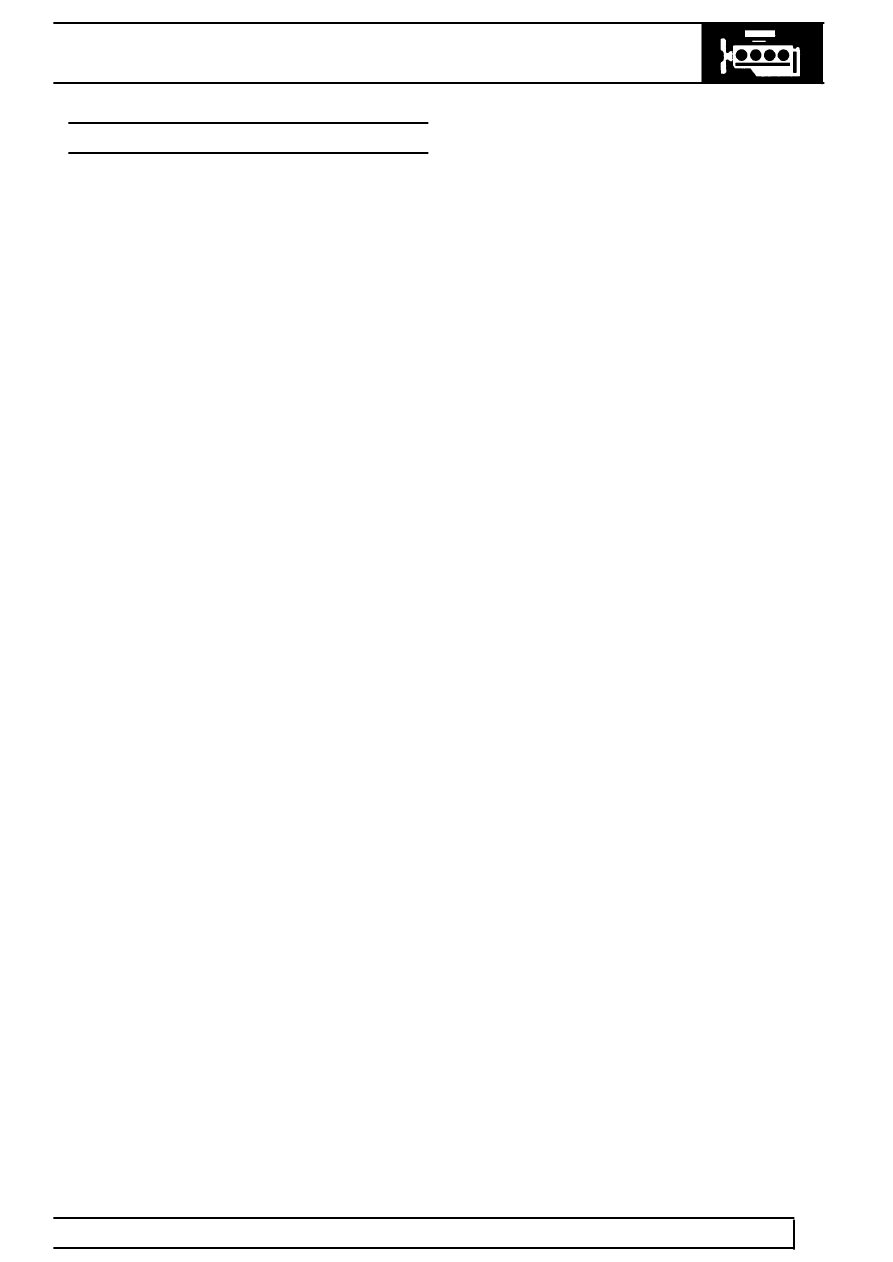Range Rover P38

BMW DIESEL
1
DESCRIPTION AND OPERATION
DESCRIPTION
The diesel engine fitted to New Range Rover is a 2.5
litre, liquid cooled, 6 cylinder, in-line unit. It has an
electronically regulated fuel injection system and is
turbocharged. Power output is increased by the
turbocharger which delivers compressed air to the
combustion chambers via an intercooler.
The engine develops 100 kW (134 hp) at 4400 RPM.
Engine performance is managed by a Digital Diesel
Electronics (DDE) system. This system monitors and
controls all engine functions such as the injection
timing, delivery volume and charge-air intercooling.
For full description of the DDE system,
See FUEL
SYSTEM, Description and operation.
The flywheel is a dual-mass unit and is hydraulically
damped to prevent transmission rattle in all operating
conditions. Attached to the flywheel, around its
circumference at 60 degree intervals, are six position
pins. These are used by the DDE system to determine
engine speed and crankshaft position.
The engine comprises the following main systems and
components:
Crankcase
Cylinder head
Air intake system
Forced aspiration system
Injection system -
See FUEL SYSTEM, Description
and operation.
Lubrication system
Cooling system -
See COOLING SYSTEM,
Description and operation.
Auxiliary driven assemblies
Crankcase
The cast steel crankcase, which incorporates a
cooling water jacket, is machined and bored to form a
cylinder block (cylinder bore 80 mm) and a crankshaft
housing. These contain the pistons, connecting rods
and the crankshaft. Bolted to the underside of the
crankcase is an aluminium reinforcement plate with an
integrated oil deflector. The reinforcement plate
increases crankcase stability and prevents oil foaming
and ventilation losses.
Pistons
Each piston is manufactured from aluminium and has
three grooves to accommodate piston rings. The top
ring is a 15
°
keystone ring, the centre ring is a tapered
compression ring and the lower ring is spring-loaded
oil ring. The piston skirt is phosphated and graphited
while the piston crown has a V-patterned groove
machined into it. The V-patterned groove forms part of
the combustion chamber, which is designed on a swirl
chamber principle. This reduces fuel consumption,
exhaust emission and smoke produced at full load.
Piston cooling is by oil which is directed to the
underside of each piston through crankcase-mounted
spray jets; drillings in the piston allow oil to circulate
thoroughly.
Pistons have a stroke of 82.8 mm and are attached to
the connecting rods by 27 mm diameter gudgeon pins
Connecting rods
Power is transmitted to the crankshaft through the
forged steel connecting rods.
Crankshaft
The crankshaft is forged from high-tensile steel and
has seven main bearing journals. Journals are
supported in bearing shells fitted to the crankcase;
dynamic balancing of the crankshaft is achieved by
the use of 12 balance weights. An axially decoupled
torsional vibration damper suppresses longitudinal
vibration of the crankshaft to reduce noise.
Crankshafts are available in three sizes which have
different journal sizes - standard size, undersize 1 and
undersize 2. A colour code, yellow, green or white
denotes the actual size of the journals.
At its front end, the crankshaft drives a close coupled
oil pump for the engine lubrication system and the fuel
injection pump timing chain. The timing chain
connects the crankshaft mounted sprocket and
injector pump drive sprocket. A second timing chain
takes drive from the injector pump sprocket to the
overhead camshaft in the cylinder head.
